
Hand in Hand C-1 - Community - Citizens and community
- Subject:
- Business and Communication
- Education
- Finance
- Special Education
- Material Type:
- Lesson
- Date Added:
- 01/03/2022

Hand in Hand C-1 - Community - Citizens and community

Hand in Hand C-2 - Community - Business and government

Hand in Hand D-1 - Our City - Banking and Money

Hand in Hand D-2 - Our City - Owning a business

Hand in Hand E-1 - Our Region - How to be an entrepreneur

Hand in Hand E-2 - Our Region - Entrepreneurs solve problems

Hand in Hand F-1 - BizTown - Getting a job

Hand in Hand F-2 - BizTown - You're Hired!
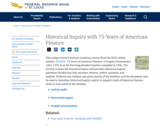
This unique activity features a primary source from the Fed's online archive, FRASER. 75 Years of American Finance: A Graphic Presentation, 1861-1935, is an 85-foot long detailed timeline compiled in 1936. The activity reviews the document layout and provides historical inquiry questions divided into four sections: observe, reflect, question, and analyze. Students can evaluate any given year(s) of the timeline, and the document may be used to introduce historical inquiry and/or to support study of historical themes, years or eras noted in the timeline.

The Federal Reserve has a congressional mandate to promote maximum employment and price stability. The May issue of Page One Economics explains how the Federal Open Market Committee (FOMC) conducts monetary policy by setting the target range for the federal funds rate and how the Fed uses its policy tools to steer the federal funds rate into the FOMC’s target range.

The Federal Reserve’s Federal Open Market Committee conducts monetary policy to promote maximum employment and price stability in the U.S. economy. Monetary policy is made at the national level, but it’s important that policy reflects the economic voices beyond Washington, D.C., and Wall Street. The November issue of Page One Economics explains how Federal Reserve Bank presidents ensure the voices of “Main Street” are reflected in monetary policy decisions.

Acquiring the use of a car is a rite of passage for high school students. In this personal financial literacy lesson, students will investigate the cost of a car, types of lending agencies, and additional costs associated with car ownership. This lesson does require that students have access to the internet for research purposes. This lesson includes optional modifications for distance learning. Resources for use in Google Classroom are included.
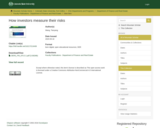
Lecture notes on data and models that financial professionals utilize to measure risk
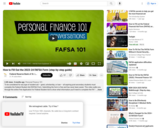
To be considered for any type of aid—grant, scholarship, or loan—all aspiring post-secondary students must complete a FAFSA. This video provides a general overview of the Free Application for Student Aid, or FAFSA.
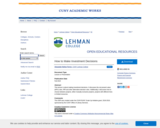
This lecture is about making investment decisions. It discusses the net present value (NPV) rules, IRR and other alternative decision rules. Additionally, it discusses how to choose between projects, either mutually exclusive projects, projects with different lives or limited resources.

Short Description:
Human Resource Management teaches HRM strategies and theories that any manager—not just those in HR—needs to know about recruiting, selecting, training, and compensating people. For questions about this textbook please contact textbookuse@umn.edu
Long Description:
Human Resource Management is adapted from a work produced by a publisher who has requested that they and the original author not receive attribution. This adapted edition is produced by the University of Minnesota Libraries Publishing through the eLearning Support Initiative. For questions about this textbook please contact textbookuse@umn.edu
Word Count: 140210
ISBN: 978-1-77897-015-3
(Note: This resource's metadata has been created automatically by reformatting and/or combining the information that the author initially provided as part of a bulk import process.)

What is Personal Finance? A great question to start off a lesson on managing and maintaining money. Have each student write down their idea of what they think Personal Finance means. You will be surprised at the different answers and ideas that students will come up with. Have students share some of their thoughts they may have on the subject of personal finance and how it determines their future success. High School students need a good understanding on how to management their money because a lot of these students have started to work part time jobs.

Lesson Objective: At the completion of this lesson, students will be able to explain risk management through a combination of avoidance, risk, reduction, retention, and transfer.

This is an interactive resource to help train anyone to be more observant and be able to identify suspects in the event a crime has occurred. While this is directed to employees of a financial institution, anyone can use it to increase their powers of observation. This is also a great exercise to give to students to help them become more observant of people and surroundings.
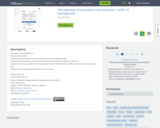
Students will be able to
Investigate how investing can be a powerful tool to meet your retirement goals
Explain why most Americans cannot rely on Social Security and pensions alone for retirement
Explore factors that can impact how much you might need in retirement and your ability to meet your retirement savings goal
Understand the growing popularity of the F.I.R.E. movement